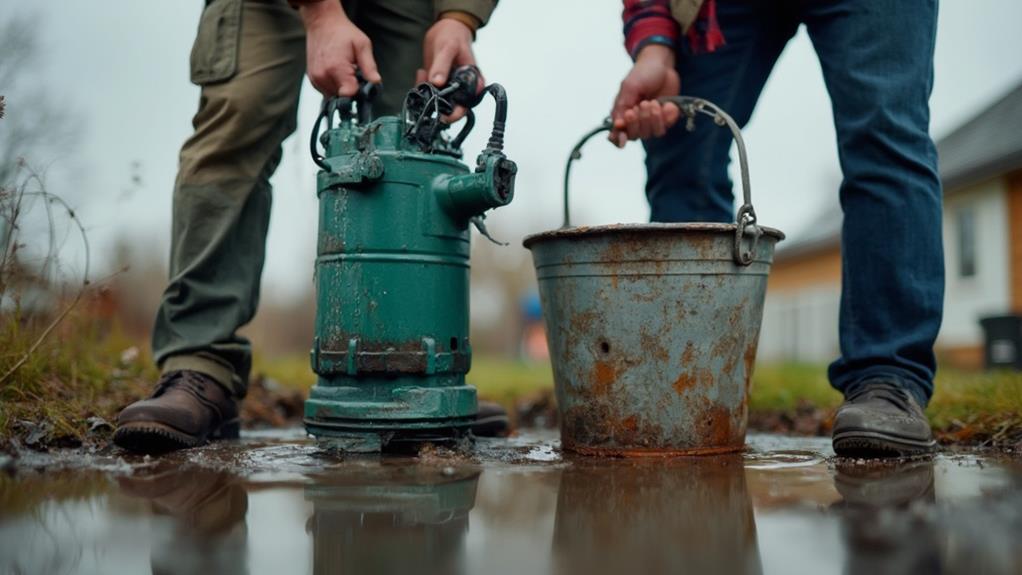Standing water issues present property owners with a choice between DIY solutions and professional help. DIY methods, like improving drainage or installing rain barrels, can be cost-effective for minor problems, ranging from $100 to $3,000. Professional services, though pricier at $300 to $15,000+, offer comprehensive assessments and long-lasting solutions. Safety concerns, property value impact, and the scope of the problem are crucial factors in decision-making. While DIY approaches may suffice for small-scale issues, persistent or large-area problems often require expert intervention. Understanding the complexities of standing water management can guide homeowners towards the most suitable and effective solution for their specific situation.
Understanding Standing Water Problems
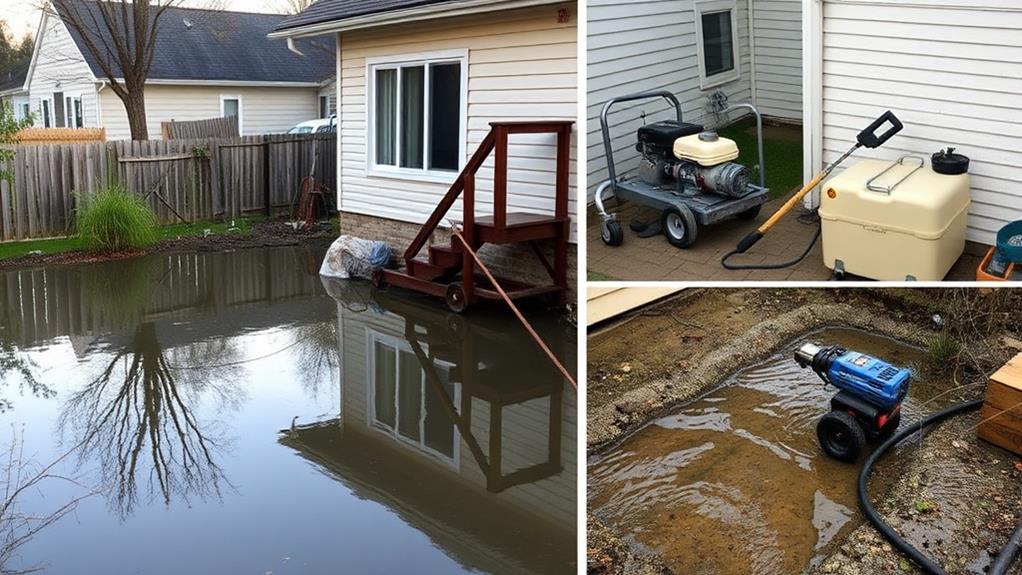
Standing water problems can arise in various areas of a property, posing significant risks to both structural integrity and human health. These issues often occur in yards, basements, crawl spaces, and around foundations. Common causes include poor drainage, improper grading, malfunctioning gutters, and plumbing leaks. Identifying the source of the problem is crucial for effective resolution.
Prolonged exposure to standing water can lead to numerous complications. It creates an ideal breeding ground for mosquitoes and other pests, increasing the risk of vector-borne diseases. Additionally, excess moisture can promote mold growth, which may cause respiratory issues and allergic reactions.
Structurally, standing water can weaken foundations, damage building materials, and compromise the overall stability of a property.
To address standing water problems, it's essential to conduct a thorough assessment of the affected area. This involves examining drainage patterns, inspecting gutters and downspouts, and checking for signs of water intrusion. In some cases, simple DIY solutions like improving grading or cleaning gutters may suffice. However, more complex issues may require professional intervention, such as installing French drains or repairing foundation cracks.
Assessing the Scope
Accurately assessing the scope of a standing water problem is a critical first step in developing an effective solution. This process involves identifying the extent of the affected area, determining the frequency and duration of water accumulation, and evaluating potential causes.
Begin by measuring the size of the waterlogged area and noting any patterns in water distribution. Observe the problem during and after rainfall to gauge how quickly water accumulates and dissipates.
Consider factors such as soil composition, terrain slope, and nearby structures that may contribute to the issue. Investigate potential sources of excess water, including faulty drainage systems, leaking pipes, or runoff from adjacent properties. Document the impact on surrounding vegetation, structures, and hardscapes.
Assess the depth of standing water and any fluctuations over time. Determine if the problem is seasonal or persistent year-round. Evaluate the effectiveness of existing drainage solutions, if any. Take note of any health or safety hazards posed by the standing water, such as mosquito breeding or structural damage. This comprehensive assessment will guide decision-making on whether DIY solutions are sufficient or if professional intervention is necessary.
DIY Methods and Tools
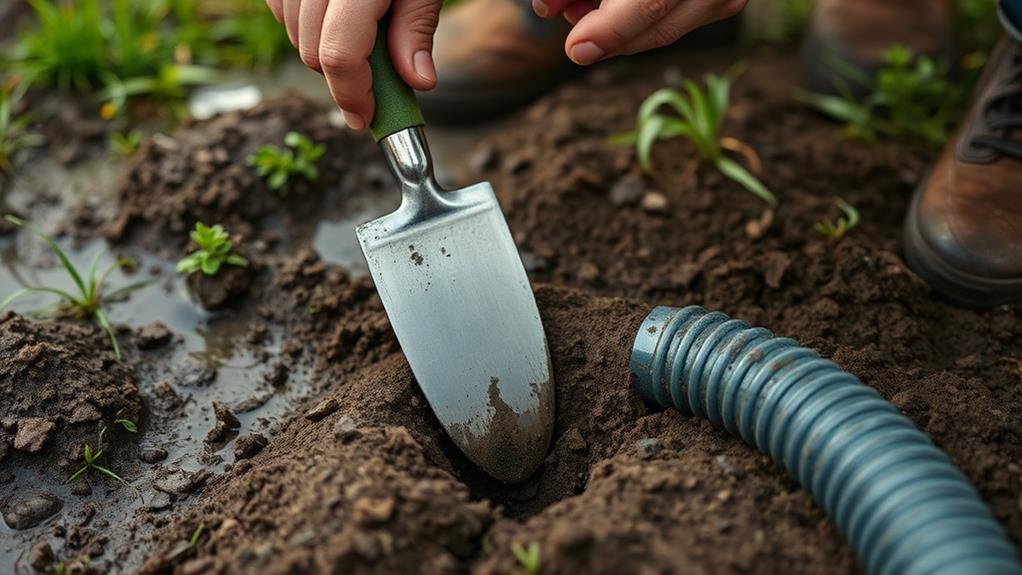
A toolbox of DIY methods can help homeowners address minor standing water issues effectively. Common tools include drainage spades for digging channels, rakes for leveling soil, and water pumps for removing excess water. French drains, constructed using perforated pipes and gravel, can redirect water away from problem areas. Rain gardens, featuring water-loving plants in strategically placed depressions, absorb excess runoff.
For hard surfaces, installing a catch basin or trench drain can collect and divert water. Improving soil quality by adding organic matter enhances drainage capacity. Aerating compacted lawns allows better water penetration. Grading techniques, such as creating a gentle slope away from structures, promote natural water flow.
Homeowners can also utilize rain barrels to collect roof runoff, reducing ground saturation. Proper gutter maintenance, including regular cleaning and the installation of downspout extensions, directs water away from foundations. For smaller areas, creating swales – shallow, graded channels – can guide water to desired locations. These DIY methods, when applied correctly, can significantly mitigate standing water problems without the need for professional intervention.
Professional Services Available
When DIY methods prove insufficient, professional services offer comprehensive solutions for persistent standing water issues. Landscaping companies and drainage specialists provide expert assessments and tailored remedies for complex water problems. These professionals utilize advanced equipment and techniques to address the root causes of standing water.
Services may include land grading, installation of French drains or dry wells, and implementation of sophisticated drainage systems. Professionals can also design and construct retention ponds or bioswales to manage excess water effectively. For severe cases, they may recommend and install sump pumps or perform extensive soil amendments to improve drainage.
Arborists and horticulturists can be consulted to address water issues related to trees and vegetation. They may suggest strategic tree removal or pruning to reduce water uptake and improve sunlight penetration. Environmental engineers offer solutions for larger properties or areas with complex topography, often incorporating sustainable water management practices.
While professional services come at a higher cost than DIY methods, they provide long-term, effective solutions backed by expertise and often include warranties. These services are particularly valuable for properties with persistent or large-scale standing water problems that require comprehensive intervention.
Cost Comparison
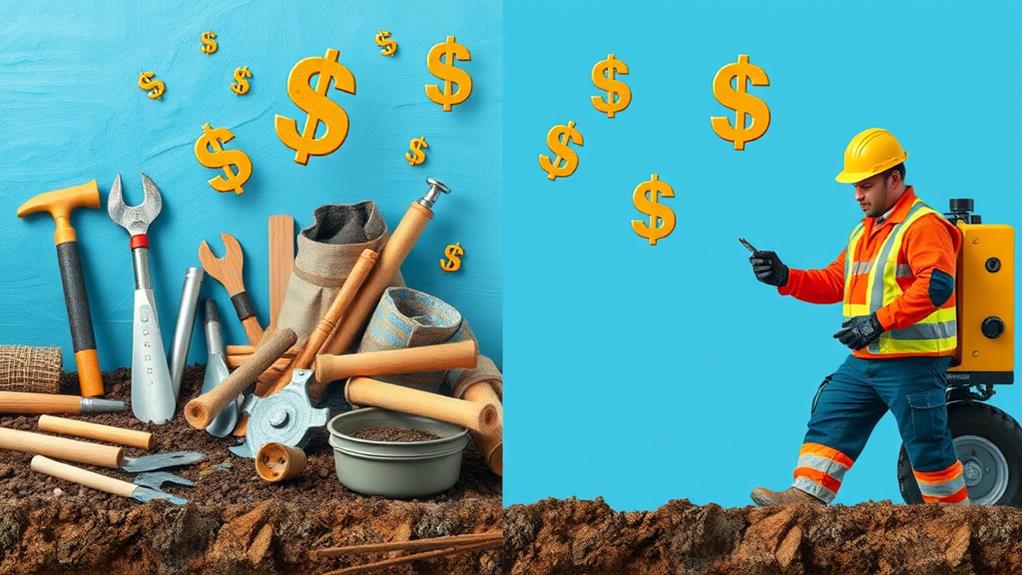
Costs for addressing standing water issues can vary significantly depending on the chosen solution and the scale of the problem. DIY methods typically involve lower upfront expenses, with basic materials like soil, gravel, and plants costing between $100 to $500 for small areas. Installing a French drain or simple dry well can range from $500 to $3,000 if done independently.
Professional services, while more expensive, often provide comprehensive solutions. A landscape architect's drainage plan may cost $300 to $1,500, while implementation by professionals can range from $1,500 to $15,000 or more for complex systems. Grading and resloping services average $1,000 to $5,000, depending on the property size and extent of work required.
When comparing costs, consider long-term benefits and potential savings. DIY solutions may require multiple attempts or ongoing maintenance, potentially increasing overall expenses. Professional work often comes with warranties and can prevent costly water damage to structures. Additionally, expertly designed systems may enhance property value, offsetting initial investments. Ultimately, the most cost-effective approach depends on the specific situation, property characteristics, and homeowner's skill level.
Time and Effort Considerations
Beyond financial considerations, the time and effort required for addressing standing water issues are important factors to weigh. DIY solutions often demand significant time investments, including research, planning, and execution. Homeowners must be prepared to dedicate weekends or evenings to the project, which may extend over several days or weeks depending on the complexity of the issue.
Professional services, while typically more expensive, offer time-saving benefits. Experts can quickly assess the problem, devise a solution, and implement it efficiently. Their experience allows them to anticipate and address potential complications, reducing overall project duration. However, scheduling conflicts may arise, potentially delaying the start of work.
DIY approaches require physical effort and technical know-how. Tasks such as grading, installing drainage systems, or constructing French drains can be labor-intensive and may necessitate specialized tools. Professionals bring both expertise and equipment, minimizing the physical strain on homeowners.
Ultimately, the choice between DIY and professional help depends on individual circumstances, including available time, physical capabilities, and willingness to learn new skills. Careful consideration of these factors will help determine the most suitable approach for tackling standing water issues.
Long-Term Effectiveness
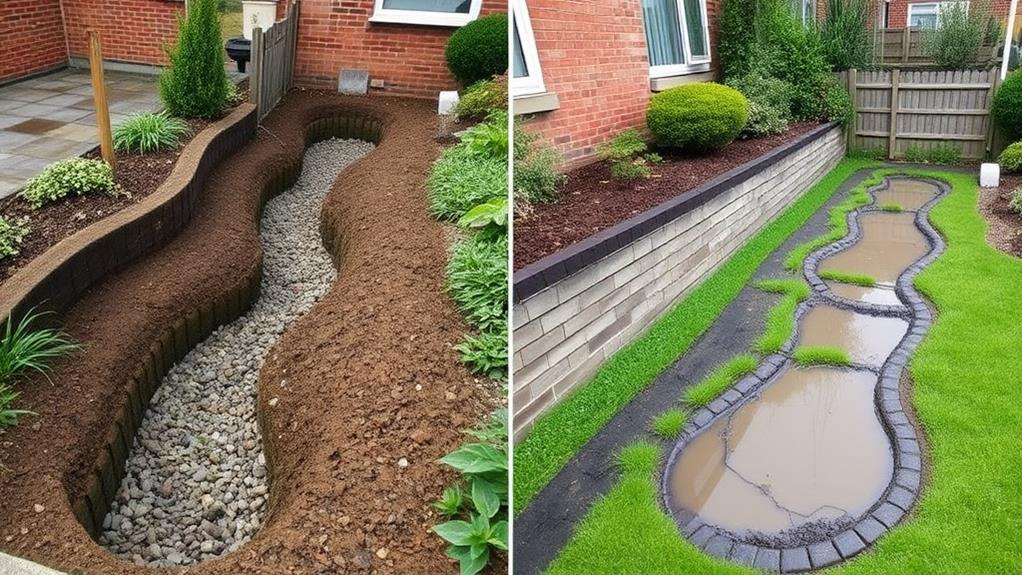
The longevity of a solution is paramount when addressing standing water issues. When comparing DIY approaches to professional interventions, long-term effectiveness becomes a critical factor. Professional solutions often provide more durable results due to their expertise, specialized equipment, and comprehensive understanding of drainage systems.
DIY methods may offer temporary relief but frequently fall short in addressing underlying causes. Homeowners might implement surface-level fixes like regrading or installing small French drains, which can be effective for minor issues. However, these solutions may not account for complex factors such as soil composition, water table levels, or neighboring property influences.
Professional contractors typically conduct thorough site assessments, identifying root causes and potential future problems. They can design and implement robust drainage systems, including properly sized pipes, strategically placed catch basins, and engineered slopes. These solutions are more likely to withstand long-term environmental pressures and changing conditions.
Additionally, professionals often use higher-quality materials and adhere to local building codes, ensuring that the implemented solutions meet regulatory standards and are built to last. This expertise can lead to more sustainable, long-term resolutions for standing water problems, potentially saving homeowners from recurring issues and costly repairs in the future.
Safety Concerns
Safety considerations play a crucial role when addressing standing water issues, both for DIY enthusiasts and professional contractors. When tackling these problems, individuals must be aware of potential hazards such as slippery surfaces, contaminated water, and electrical risks. DIY approaches may expose homeowners to these dangers without proper protective equipment or expertise.
Professional contractors typically have the necessary safety training and equipment to mitigate risks effectively. They are familiar with proper water removal techniques, sanitization procedures, and electrical safety protocols. Additionally, professionals can identify and address underlying issues that may pose hidden dangers, such as compromised structural integrity or mold growth.
DIY methods may inadvertently create new safety hazards if not executed correctly. Improper use of pumps or electrical equipment near standing water can lead to electrocution risks. Moreover, attempting to remove large volumes of water without proper knowledge can result in property damage or personal injury.
When deciding between DIY and professional help, it is essential to assess the scope of the problem and one's own capabilities. For extensive or potentially hazardous standing water issues, enlisting professional assistance is often the safest and most effective course of action.
Property Value Impact
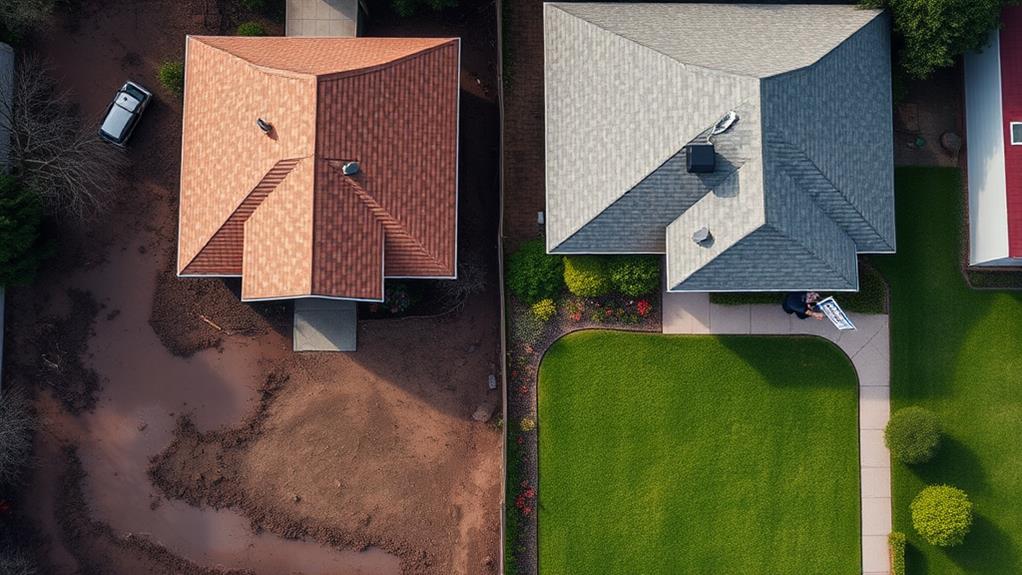
Standing water issues can significantly impact property values, often leading to a decrease in market worth and desirability. Potential buyers may be deterred by visible water problems, perceiving them as indicators of poor drainage, foundation issues, or potential flooding risks. These concerns can result in lower offers or extended time on the market when selling a property.
Addressing standing water problems promptly can help maintain or even increase property value. Professional solutions, such as improved drainage systems or landscaping modifications, demonstrate a proactive approach to property maintenance. This can reassure potential buyers and appraisers, potentially leading to higher valuations.
Additionally, unresolved water issues can lead to long-term damage, including soil erosion, foundation settling, and mold growth. These problems can further decrease property value and require costly repairs. By contrast, properties with effective water management systems may command premium prices, especially in areas prone to heavy rainfall or flooding.
Real estate professionals often emphasize the importance of proper water drainage when assessing property values. Homes with well-maintained yards and no visible water problems typically have a competitive edge in the market, translating to better resale potential and overall investment value.
When to Call Experts
Recognizing when to seek professional help for standing water issues is crucial for effective problem-solving and preventing further damage. While some minor standing water problems can be addressed through DIY methods, certain situations warrant expert intervention.
Call professionals when standing water persists despite your best efforts to resolve it. If you've attempted basic drainage solutions, such as clearing gutters or creating small trenches, but the problem continues, it's time for expert assessment. Additionally, seek help if the standing water covers a large area or is particularly deep, as this may indicate more complex underlying issues.
Experts should be consulted when standing water is causing structural damage to buildings, foundations, or landscaping elements. If you notice cracks in walls, shifting soil, or unusual plant die-off, these could be signs of serious water-related problems. Persistent standing water near electrical systems or septic tanks also requires immediate professional attention due to safety concerns.
Frequently Asked Questions
Can Standing Water Attract Dangerous Wildlife to My Property?
Standing water can indeed attract dangerous wildlife to your property. It serves as a breeding ground for mosquitoes, which can carry diseases. Additionally, it may attract venomous snakes, alligators, and other potentially harmful animals seeking water sources.
How Often Should I Inspect My Property for Standing Water Issues?
Time is of the essence when it comes to standing water inspections. Ideally, conduct thorough checks monthly, especially after heavy rainfall or snowmelt. Increase frequency during rainy seasons or if you've had previous issues, ensuring prompt detection and resolution.
Are There Any Eco-Friendly Solutions for Dealing With Standing Water?
Several eco-friendly solutions exist for managing standing water. These include installing rain gardens, using permeable pavement, creating bioswales, implementing green roofs, and utilizing rainwater harvesting systems. Native plant landscaping can also help absorb excess water naturally.
Can Standing Water Problems Affect My Home Insurance Coverage?
Standing water problems can indeed affect your home insurance coverage. Insurers may view persistent standing water as a risk factor, potentially leading to higher premiums or coverage limitations. It's advisable to address these issues promptly to maintain favorable insurance terms.
What Are the Legal Implications of Ignoring Standing Water on My Property?
Coincidentally, a neighbor recently faced legal troubles for neglecting standing water. Ignoring this issue can lead to liability for property damage, personal injury claims, and potential fines for violating local health codes or ordinances. Prompt action is advisable.
Conclusion
In the battle against standing water, homeowners must weigh the merits of DIY solutions against professional intervention. While self-reliance can yield cost savings and immediate action, complex issues may necessitate expert involvement. The decision hinges on factors such as problem severity, safety considerations, and long-term effectiveness. Ultimately, addressing standing water is not just a drop in the bucket; it's an investment in property value and structural integrity. Timely and appropriate action remains paramount.
